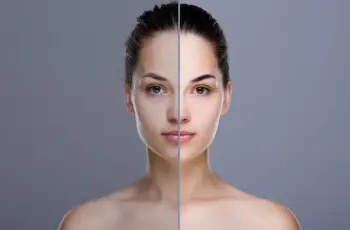
Transforming Growth Factor Beta (TGF-β) in Skin Serums
Transforming growth factor beta, commonly known as TGF-β or TGF-β, is an important growth factor in anti-aging serums.
TGF-β in the skin promotes collagen production and is therefore added to many anti-aging serums. However, growth factors in skin care products may be unstable and unable to penetrate the skin.
(1) Is TGF-β serum worth buying? Maybe, maybe not.
There are many anti-aging skin care serums on the market that contain anti-aging ingredients. How do you know which one is the best?
The only scientifically sound way to find the growth factor or anti-aging serum that is best for you is to study your Bowman skin type.
What is TGF-β?
TGF-β is the most important growth factor that regulates the production of extracellular matrix (ECM) proteins (such as collagen and elastin) and glycosaminoglycans (such as hyaluronic acid and heparin sulfate) in the skin.
There are different types of TGF-beta.
TGF-β1 is found in skin care products for skin regeneration, anti-aging treatments, and wound healing. (2)
TGF-β in the Skin
Transforming growth factor beta (TGF-β) is a multifunctional cytokine in the transforming growth factor family.
These proteins play a vital role in regulating various cellular processes including cell proliferation, differentiation, migration, and apoptosis.
In mammals, the TGF-β family consists of several isoforms such as TGF-β1, TGF-β2, and TGF-β3. These are synthesized as precursor proteins and then activated through a complex maturation process.
TGF-β is a potent regulator of many aspects of immune function, wound healing, and tissue regeneration, playing a key role in the development of various tissues and homeostasis.
Effects of Natural TGF-β on Skin
In terms of skin health, TGF-beta plays a vital role in maintaining skin integrity and healing.
It promotes the synthesis of extracellular matrix components such as collagen, elastin, and fibronectin, which are essential for the firmness and elasticity of the skin.
During wound healing, TGF-β is essential for regulating inflammation and recruiting cells to the site of injury, where it supports tissue repair and scar formation.
In addition, it helps regulate the balance of skin cell proliferation and differentiation, thereby maintaining the normal structure and function of the skin.
Dysregulated TGF-β signaling has been linked to a variety of skin disorders, including scarring, fibrosis, and certain inflammatory diseases.
How TGF-β Promotes Skin Collagen Production
Transforming growth factor beta (TGF-β) is a superstar in skin collagen production.
This powerful protein regulates cell growth, proliferation, and differentiation, making it an important player in wound healing and skin regeneration.
When TGF-β binds to receptors on dermal fibroblasts, it triggers a signaling cascade that ultimately stimulates collagen synthesis.
Studies have shown that TGF-β stimulates fibroblasts to produce more type I and type III collagen, the two main structural collagens that make up more than 90% of the dermal matrix.
TGF-beta also inhibits collagen degradation by blocking matrix metalloproteinases.
Additionally, TGF-beta attracts immune cells (i.e. macrophages) to the wound site, where they release more TGF-beta, further boosting collagen formation.
This cytokine can even stimulate fibroblasts to transform into active myofibroblasts, which synthesize abundant collagen as part of the skin repair process.
TGF-beta – Benefits for Skin
TGF-beta has many benefits for the skin, as it activates processes in the skin that make it stronger and younger. It influences many of the processes associated with skin aging.
Therefore, a good TGF-beta product can improve fine lines and skin texture.
This anti-aging growth factor:
Stimulates dermal collagen remodeling, increasing collagen production (1),
Increases hyaluronic acid production (4) and
Decreases matrix metalloproteinases (5), enzymes that break down these important skin components.
How does TGF-beta work?
When the TGF-beta receptor is activated, the TGF-beta/Smad signaling pathway is activated. This important signaling pathway helps the skin rejuvenate.
Do TGF-β serums really work?
TGF-β is applied topically to the skin in the form of serums, creams, or lotions and is designed to be absorbed by the skin.
The TGF-β molecule itself is relatively large and has difficulty penetrating the outermost layer of the skin (the stratum corneum).
To increase its penetration, it is often encapsulated in liposomes or other carrier systems, allowing it to reach deeper layers of the skin and work.
The effectiveness of topical TGF-β skin products may vary depending on the formulation and individual skin type.
Research has not been completed on the effectiveness of topical TGF-β, but some studies suggest that it may have positive effects on the appearance of the skin.
These include reducing wrinkles and improving skin texture and tone, presumably by stimulating collagen production and other skin renewal processes. However, not all formulations are effective.
Skin Care Products with TGF-β
The best brand for TGF-β in skin care is Plated SkinScience. Their revolutionary use of cutting-edge anti-aging technology makes them one of the best brands on the market today!
These are my favorite Plated SkinScience products:
How does TGF-β relate to skin aging?
UV radiation inhibits the TGF-β/Smad signaling pathway, a process known as extrinsic skin aging.
Blocking the TGF-β/Smad signaling pathway can lead to photoaging, skin wrinkling, and the development of skin cancer. (6)
How can I increase levels of TGF-β in my skin?
In addition to using TGF-β in skin serums, there are other ways to stimulate fibroblasts to release more TGF-β.
17β-estradiol increases TGF-β production (7).
Topical application of retinoids increases the activity of the TGF-β/Smad signaling pathway. (8).
Fibroblasts exposed to hypoxia produce more TGF-β. (9).
This is another reason why I prefer retinoids to treat skin wrinkles.
Is TGF-β safe for skin application?
TGF-β appears to be safe when applied to the skin. Indeed, a reduction in TGF-β may make the skin more susceptible to cancer, but more data are needed. (10,11)


